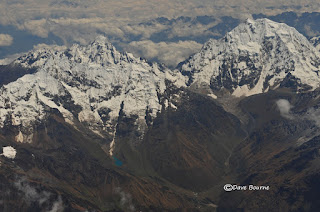Until we started touring Florida, I had no idea that Pygmy Rattlesnakes even existed. We have seen them on Cape San Blas and on St Vincent Island Nature Refuge. There is a local resident that will ferry you and your bike across to the island for a small fee. Once on the island you are free to tour the many swamps, forests and beaches. The entire island is a nature preserve and you are likely to encounter snakes, Red Wolf, Sambar Deer, Wild Boar, alligators, plus all kinds of shorebirds. And there are always Bald Eagles and Great Horned Owls nesting on the island.
Most people in the area wear snake guards on their shins while gardening or landscaping. Sometimes they lie sunning across the trail and without close inspection resemble sticks.
Most adult Pygmy Rattlesnakes are about 12-24 inches in total length. This is a very small snake, but it is thick for its size. The body color varies from light to dark gray, and a lengthwise row of black or charcoal blotches disrupts a reddish-brown stripe running down the middle of the back which can be clearly seen on this image. The tail is slender and ends in a tiny rattle. The head is distinct from the neck and has a black diagonal line just behind the eye. The coloration of juveniles is the same as described for adults, except the tail tip of juveniles is bright sulfur-yellow in color.




















































